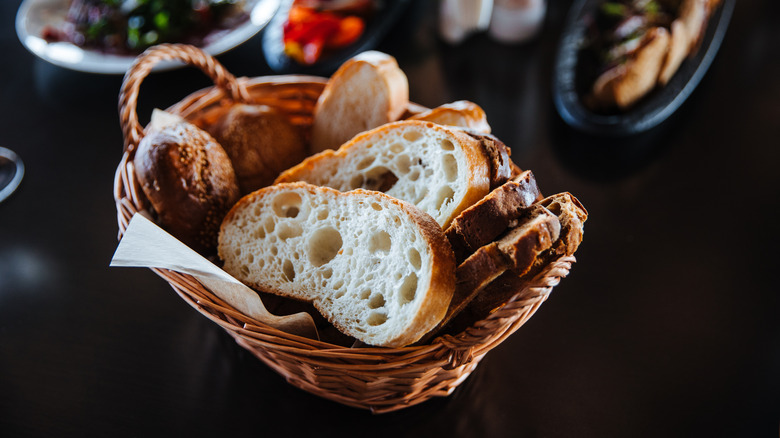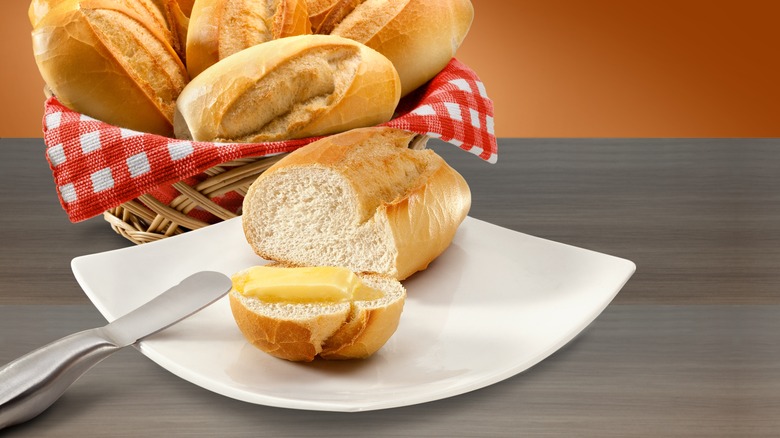Even The Way You Eat Your Bread Has A Fine Dining Restaurant Rule
If you've ever seen a show like "Downton Abbey" or keep a close eye on The Royal Family, chances are you're familiar with some strict dining etiquette rules people have adhered to throughout history. From the placement of a fork to how you should sip wine, etiquette rules have been established for nearly every aspect of dining.
While there's no real need to know the finer points of napkin placement when grabbing a burger from a fast food joint, there are still instances where dining etiquette knowledge can come in handy. For example, at galas or upscale restaurants, proper dining behavior can help you make a good impression on other guests. While you may think it's as simple as knowing which utensil to use once your meal arrives, dining etiquette comes into play as soon as your bread basket hits the table.
Believe it or not, there is a right and a wrong way to eat bread in a formal dining establishment. The same rules apply whether you're eating a baguette, roll, or even a muffin. Etiquette dictates that bread and butter should be placed on a bread plate (the small plate on your left) and gradually broken into small, bite-sized pieces instead of lifting the bread to your mouth and biting off smaller pieces as you go. Also, bread should remain on the plate unless you are actively delivering it to your mouth.
Apply butter and other condiments with care
Do you plan to put butter on your bread? Do not butter the whole piece at once, as this could result in a greasy mess on your hands and face. Instead, once you've broken off a bite of bread, apply butter to that piece only and then put it in your mouth to eat.
When the bread is served with olive oil or tapenade in a communal dish, things can get a little tricky. If you're dining with a familiar crowd, like close family or friends, it's acceptable to dip a small piece of bread into the shared dipping plate, as long as you avoid double-dipping. However, when dining with a more formal group, one option is to spoon a small amount of the dip onto your plate, then spoon it onto your bread before each bite. Alternatively, you could request the server supply you with a separate dipping plate.
While the etiquette rules surrounding bread may seem a bit over the top, they may come in handy the next time you want to make a good impression in a formal setting. At the very least, they're much simpler than some of the other strange etiquette rules some formal restaurants employ.

